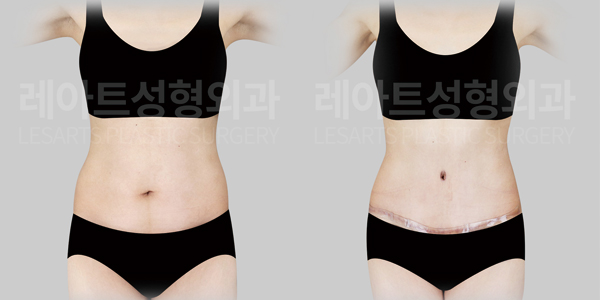Would abdominoplasty and abdominal liposuction be suitable for sagging and loose belly fat?

Information
- Age : mid 40’s
- Height : 167cm
- Weight : 57kg
- BMI : 21
Surgical site
- surgical site :abdominoplasty, M-type, Triple lock, Navel Correction, abdomen liposuction, hip joint
- liposuction aspirate volume : 1400cc
- Fat Grafting: Hip joint(RT : 90cc, LT : 120cc)
Would abdominoplasty and abdominal liposuction be suitable for sagging and loose belly fat?
Long-term weight gain, rapid weight loss, or pregnancy and childbirth can significantly reduce skin elasticity and resilience, often leading to sagging belly fat.
This body shape concern can cause people to avoid exposing their midsection, refrain from wearing fitted clothing, and even experience decreased confidence.
As a result, many individuals seek consultations for abdominoplasty to restore their abdomen’s original appearance and improve its firmness.
Abdominoplasty involves tightening separated abdominal muscles and removing excess sagging skin. If necessary, it can also be combined with liposuction to refine the overall abdominal contour.
For those struggling with sagging belly fat, this procedure is not only a cosmetic solution but also a way to regain self-confidence.
Let’s take a look at a case of a patient who underwent abdominoplasty.

This time, we will analyze a case of an abdominoplasty patient who had previously undergone a cesarean section.
She was particularly concerned about the overall shape of her abdomen, which included sagging skin and accumulated belly fat.
Before considering abdominoplasty, the patient initially underwent abdominal liposuction at another clinic to address her concerns. However, she experienced a rebound effect and did not see significant improvement.
Due to the loss of skin elasticity and persistent sagging belly fat, she ultimately visited our clinic for a solution.
Despite her efforts with exercise and dietary management, she struggled to achieve a toned abdomen, which led her to make the final decision to undergo abdominoplasty.

The preoperative body shape assessment revealed a significant loss of skin elasticity across the entire abdomen.
Additionally, due to the laxity of the abdominal wall, the upper abdomen lacked firmness and appeared saggy.
The shape of the navel also followed the direction of the sagging skin, resulting in a downward-pulled appearance.
To address these concerns, a medium-type abdominoplasty was recommended. This procedure would lift the sagging abdominal skin and tighten the separated rectus muscles, enhancing the waistline.
Furthermore, the patient expressed a desire for a more defined waist. Therefore, a combination of abdominoplasty and liposuction was planned to achieve the desired silhouette.
Since the medium-type abdominoplasty involves extensive dissection up to the upper abdomen, excess skin would be pulled downward and removed. Consequently, navel repositioning was necessary.
We also planned to reshape the navel in an optimal position to make the waist appear slimmer and the legs look longer, enhancing the overall body proportions.
Now, let’s compare the preoperative and 3-month postoperative photos to discuss the results in detail.

When comparing the patient’s preoperative and 3-month postoperative photos, we can observe a significant transformation in the abdominal area.
The rectus muscle diastasis, which caused both upper and lower abdominal bulging due to pregnancy and childbirth, was effectively corrected, restoring firmness.
Additionally, the sagging skin was lifted, resulting in a more toned and sculpted abdominal contour.

Furthermore, the excess skin that previously sagged forward when bending the waist was effectively corrected.
Additionally, the abdominal liposuction performed alongside the procedure helped achieve a slimmer and more contoured waistline.

Before the surgery, the belly button, which had a horizontal shape due to sagging abdominal skin and a weakened abdominal wall, was reshaped into a vertical form through umbilicoplasty.
The position of the belly button was also adjusted to align with the newly contoured waistline, enhancing the appearance of a slimmer waist and creating the illusion of longer legs.
The patient expressed concerns about post-surgical scar management as much as the surgery results.
Since abdominoplasty scars require a long healing period, we explained that while the scars may initially appear red or dark, they will gradually fade over time and eventually remain as a faint line.
Therefore, we emphasized the importance of following the hospital’s recommended post-operative care, including scheduled laser treatments and, if necessary, additional injections for scar management.
We also reiterated the significance of consistent self-care at home, such as applying scar ointment and using silicone sheets, to ensure the best healing outcome.